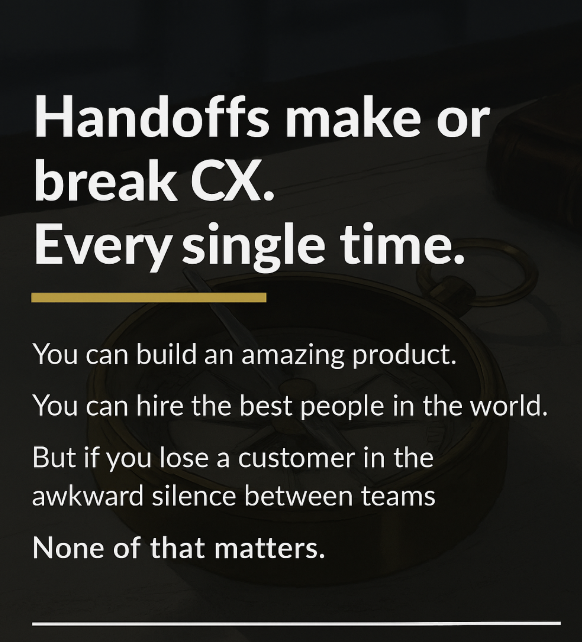Customer Success Isn’t a Support Function
- Johan Gedde
- May 22
- 2 min read

It’s the Growth Engine You Build After the Deal Is Signed
Too many companies treat Customer Success like an afterthought.
Support tickets. Onboarding calls. QBR decks.
Important? Yes.
Strategic? Not unless you build it that way.
💬 The Comment That Got Me Thinking
A while back, Kassandra McLaren posted about this exact tension—and in the comments, she asked:
“What have you found makes the quickest impact when building CS functions?”
It stuck with me. Because so many companies are either building or rebuilding their Customer Success teams right now. And the one thing they all want is: Momentum fast.
🎯 The Fastest Impact? Align CS Around Outcomes
Not around tasks. Not around inbox management. Not around “call volume.”
Outcomes.
Most CS orgs start with activity checklists:
✅ Calls
✅ Onboarding decks
✅ NPS surveys
✅ QBR slides
But none of that moves the needle until you connect it to what customers actually want to achieve.
🔁 1. Anchor Everything to Customer Outcomes
This is where transformation starts.
Ask:
→ What real-world outcome is the customer trying to achieve?
→ What adoption milestones represent progress toward that outcome?
→ How do we use every touchpoint—calls, emails, playbooks—to guide them toward value?
When CS teams stop checking boxes and start guiding toward outcomes, everything changes.
🛠️ 2. Build Simple, Repeatable Workflows
Don’t over-engineer.
Instead, design workflows around clarity and consistency:
→ What happens at each stage?
→ Who owns it?
→ What outcome does it drive?
You’re not just documenting processes—you’re orchestrating value delivery.
That shift from task execution to outcome enablement? That’s where real momentum begins.
🧭 From Momentum to Scale: Two Critical Levers
Once CS is aligned to outcomes, scale comes from two places:
➤ Tooling That Enhances, Not Clutters
You don’t need complexity.
You need:
Signal visibility
Workflow automation
AI to detect behavioral shifts and milestone slowdowns
The right tools don’t just track—they guide.
➤ Cross-Functional Alignment
Customer Success isn’t a department metric.
It’s a company-wide outcome.
Sales, Product, Marketing, and CS should all align around:
Shared milestones
Leading indicators
Expansion and retention goals
When alignment is tight, the customer journey becomes a system—not a scramble.
🧠 The Big Early Win?
Stop measuring activity. Start scaling value.
You want traction? Tie every action to what the customer actually cares about. Then build the systems that deliver it at scale.
💬 Over to You
What made the biggest difference when you built (or rebuilt) your CS function?
Let’s compare notes, drop a comment or message me directly.
✅ Follow me on LinkedIn for weekly execution-first Customer Success strategies





Comments